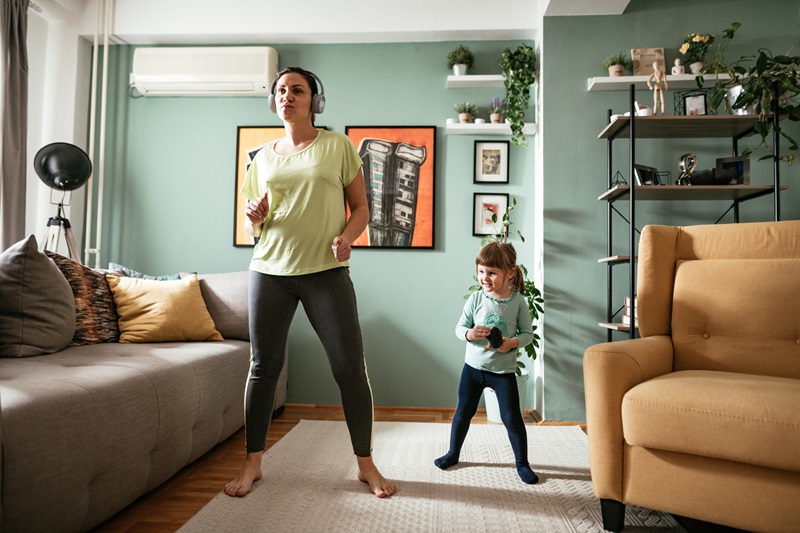Imagine transforming your fitness routine into a joyous celebration that not only ignites your metabolism but also elevates your mood, connects you with others, and brings a whirlwind of health benefits. Dancing, an ancient form of expression, has evolved into a modern-day miracle for wellness, offering a unique blend of physical, mental and emotional health benefits.
Beyond the rhythm and steps lies a powerful health-enhancing tool that can improve cardiovascular health, boost weight loss, enhance muscle tone and flood your system with happiness hormones. This isn’t just exercise; it’s a pathway to a healthier, happier you, wrapped in the exhilarating beats of your favorite tunes.
Dive into the world of dance and discover how this delightful activity can be your secret weapon for a vibrant, healthier life.
Scientific Insights: Dancing’s Multifaceted Health Benefits

Scientists from many different disciplines have been studying the impact of dancing on our physical, mental and emotional well-being. Besides being just about the most enjoyable research imaginable, these studies have found that you can shake and shimmy to better health.
The Power of Dance for Weight Loss and Metabolism
You move, you lose. Seriously, what we mean by that is 30 minutes of daily activity fires up your metabolism and keeps you burning calories all day long. It’s one of the keys to weight loss success.
But you don’t have to get stuck in a boring exercise routine to get the benefits of regular activity. You can have fun with family and friends, release tension and shed extra pounds while dancing to your favorite music.
Dance Your Way to a Happier, Healthier Heart
Just like any workout, dancing tones your muscles and strengthens your heart. Best of all, you can’t help but feel happy when you move your body to the beat!
Dance vs. Traditional Workouts: A Comparative Look

At the University of Brighton in the U.K., a team in the Sports Medicine Research department concluded that a “30-minute dance could be as beneficial to your body and mind as a session in the gym or on the track.”
Likewise, a report, published in the journal Applied Human Science, notes that “a low impact aerobic dance is as useful as jogging or cycling in improving body composition and aerobic power for mildly obese middle-aged women.”
Dance as a Catalyst for Body Composition and Mood Enhancement
How much difference can dancing actually make? Overweight women who participated in a dance class on a regular basis saw a 20 percent decrease in fat mass after nine months, according to the Journal of Physical Education and Sport.
Not coincidentally, those subjects also reported a 24 percent increase in self-confidence and a 21 percent improvement in their overall mood.
The Universal Benefits of Different Dance Styles
Various dance styles offer these health benefits. A review of research, published in BMC Public Health, highlight that Latin dances (like salsa, rumba and merengue) offer exceptional cardiovascular exercise that enhances heart health. Additionally, these dances contribute to muscle strength, flexibility, balance and weight loss.
Latin dance also was shown to have a positive impact on stress, mood, social connections and cognitive functioning.
A study, published in the journal Obesity, found that African dance may be effective for promoting weight loss in African American older adults with obesity.
Choosing Your Dance: Find What Moves You

What kind of dancing is best? The kind that you like to do! A half-hour of waltzing or doing the foxtrot burns about 108 calories (for a 155-pound person), about the same amount as 30 minutes of bowling, according to Harvard Medical School.
Disco or square dancing uses up 198 calories, comparable to golfing. Ballet or more energetic dances can burn about 215 calories, the equivalent of swimming for 30 minutes. A high-intensity Zumba workout can melt off more than 300 calories in a half-hour.
Getting Started: Easy Ways to Incorporate Dance into Your Routine
Getting started with dancing for your health is easy. You can just pop on any music you love and start moving. It’s even more fun if you have a partner or kids to join you.
Beyond the Basics: Structured Dance Workouts and Classes
If you want a more structured dance workout, you can find lots of videos on YouTube to get you moving, such as this 10-Minute Zumba Dance Workout for Beginners.
If you’d like a little more in-person instruction, many gyms offer classes in Zumba and Barre, a workout that blends ballet, Pilates and yoga. More formal dance instruction can help you develop new skills. Jazz, tap and Irish stepdancing are challenging to learn and physically demanding, yet quite rewarding.
The Social Side of Dancing: Group Dynamics and Benefits
Dancing with a group can keep you feeling connected and happy, as well as fit and active. With line dancing, you coordinate your moves with other people. Square dancing and contra dancing are similar folk styles that involve a “caller,” or leader who announces the dance pattern as the many participants move among themselves.
You can find local groups in your area through social media, Meetup.com, or through the United Square Dancers of America or Contra Dance Links.
Long-Term Benefits: Why Dance Sticks

Whichever style of dance appeals to you, incorporating it into your daily activity will have a long-term impact. That’s because you are more likely to stick with a dance routine than other workouts, according to research published in the journal Diabetology and Metabolic Syndrome. This study compared results between people who participated in dance classes versus those who choose other forms of exercise. After six months, the dance group remained consistently active, while the others tailed off after three months.
The research we’ve cited here is just a peek at the volumes of studies on the benefits of dancing. But all you have to do is start moving to the music and you’ll know how good it makes you feel, from the top of your head to your tapping toes!

